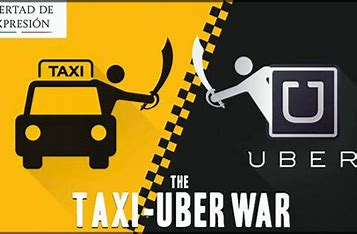
Introduction:
In recent years, Uber, which focuses on shared travel, has become a typical representative of the sharing economy. Its emergence has affected many traditional industries, mainly the traditional taxi industry.
Video: Caught on camera: Taxi driver confronts Uber driver – YouTube
1. The decline of traditional taxi services:
Since the emergence of Uber travel, its advantages and disadvantages compared with traditional taxis have been one of the hot topics of social debate. (Percoco, 2019) This is mainly because Uber’s convenience, safety, and economy are better than the traditional taxi industry. As a deeply rooted traditional industry, there are specific reasons why it is gradually being replaced.
First of all, Uber is very convenient. When users want to travel, they only need to use the mobile phone software to make a reservation, and then they can call a car. This is much better than waiting on the street for a traditional taxi. Moreover, when the weather is terrible, the advantage is obvious. In addition, the Uber app also allows passengers to estimate their arrival time, which makes time planning much more straightforward.
Secondly, Uber is relatively safer. Suppose a person wants to become an Uber driver. In that case, he needs to go through a rigorous background check, and the customer can know the driver’s personal information and the vehicle’s information during the ride. If something unexpected happens, uber’s background will also save the passenger’s ride data.Moreover, every movement during the trip is tracked in the app and can be shared with family and friends in case of an emergency. While traditional taxis have safety measures in place, Uber offers more transparency and makes riders feel more at ease.
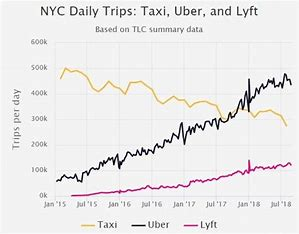
As for affordability, Uber is often more economical than traditional taxis. Its dynamic pricing mechanism, especially during off-peak hours, gives passengers more competitive rates. (Kiraci,2020) In addition, Uber often offers special promotions, further attracting many users.
This picture reflects the user data feedback of Uber and taxis from 2015 to 2018. You can see that the number of Uber users is proliferating while the number of taxi users is declining precipitously. Uber has gained many users because the system algorithms often give users more suitable traveling solutions. This is mainly reflected in the short waiting times and the transparent fare system. Users can even see the real-time location on the app, thus avoiding being detoured. (Diego Correa,2021) Uber’s rating and accountability mechanisms importantly ensure a better user experience.
2. Extensions: Uber Eats and the food industry
Apart from ride-sharing services, one of the most famous businesses of Uber is the launch of Uber Eats. Uber Eats is a takeaway platform for online food delivery. In the fast-paced modern life, finding a convenient and fast way to eat has become necessary for most people. This is where Uber Eats comes into play. This popular takeaway platform offers consumers a variety of conveniences that make ordering food more straightforward than ever.
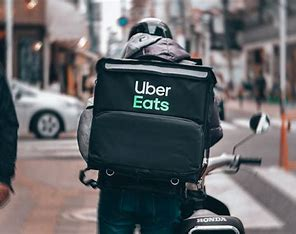
Firstly, the most significant benefit is not having to leave home. When the user wants to dine at any time and place, he does not need to physically go to the restaurant to eat or pick up his food. Instead, he can choose his favorite food on the software. When a person is traveling and needs to become more familiar with the local environment, Uber Eats is a good dining option.
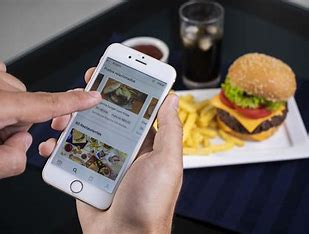
Secondly, Uber Eats has many options. Here, you can eat from almost every place, and at the same time, you can choose between fast food and high-end restaurants according to your budget. In layperson’s terms, you can choose your favorite food precisely according to your budget and preferred tastes instead of picking out something that is relatively likely to taste good in a restaurant.
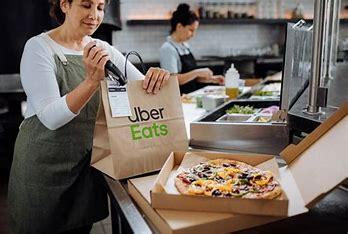
Finally, the rating system improves user convenience. When a user is choosing a restaurant or food, they can go through the rating system above to get a general idea of how the restaurant or food is rated in everyone’s mind. This dramatically reduces the cost of trial and error. In other words, this rating system is like a filter sieve. It helps you filter out the bad ones. It is still up to the user as to how to choose.
The impact of Uber Eats on the traditional food industry is two-sided. Firstly, many restaurants see the economic advantages of a platform like Uber Eats. By connecting to this extensive online customer base, restaurants can significantly expand their reach. Uber Eats offers a low-cost solution that allows restaurants to proliferate and increase sales without investing heavily in traditional marketing or expansion, particularly for new or looking to expand their clientele.
However, the rise of Uber Eats has also put financial pressure on some restaurants. The platform’s charging system mainly causes this phenomenon. As a platform, it needs to cover the cost of platform operations through a certain proportion of commissions on each order. Back to the essence, it is a company. So he needs to make money; he is not a charity. Therefore, this has resulted in the unique profits of some restaurants being divided up by the platform (Luna, 2020). Of course, some offline restaurants are most affected. This is mainly because the operating costs of offline restaurants are too high, including employees, rent, Utility bills, etc., which are all expenses. The growth of online business also means a decrease in offline orders. This is also why many offline restaurants are under tremendous pressure to operate.
3. Logistics Solutions: Uber Freight
Uber Freight has quickly gained market share over traditional freight transportation methods due to its high efficiency and transparency.
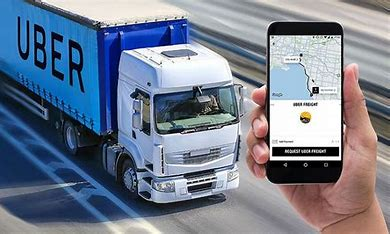
In terms of efficiency, Uber Freight has dramatically simplified the transportation process. Compared with traditional freight transportation methods, cargo owners must contact multiple people to find transportation drivers. It is also tricky for transport drivers to find the source of goods. So, this is a win-win project. This platform lets customers directly connect with drivers, significantly reducing the intermediate process. So the efficiency is improved.
Coupled with transparency issues, it is often difficult for shippers to track the location of goods in real time or understand the status of shipments in traditional freight shipping. At the same time, the transport driver often decides the price, and there is no reasonable price system for reference. However, Uber Freight’s platform provides real-time cargo tracking, allowing shippers to know the exact location of their cargo at any time. (Benzinga, 2019) Moreover, his rating system and price system are very transparent. It is precisely this advantage that puts much pressure on traditional freight companies. For many traditional trucking companies to remain competitive in the market, they have to rethink and adjust their operating models.
4. Ripple Effect: Impact on Rentals and Public Transport
As Uber’s popularity and market influence continue to expand, it has gradually affected many traditional industries. The most obvious of these are the car rental industry and the public transportation industry.
Rental:
Traditional car rental businesses used to rely on travelers or members of the public who did not own a private car. However, the emergence of Uber has disrupted this model. Uber offers an instant, peer-to-peer service where consumers do not have to worry about returning a car, fuel, insurance, or parking. For many people, especially short-term city travelers, Uber is more convenient and economical than renting a car. This has exposed traditional car rental businesses to competition from the powerful convenience of Uber, forcing them to rethink their business models and service strategies.
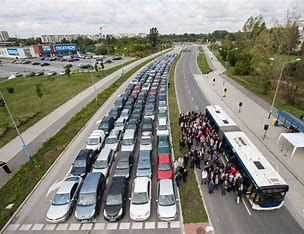
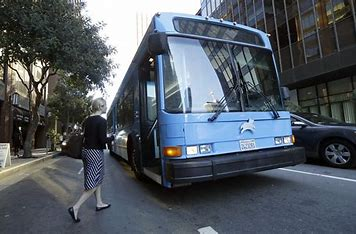
Public transport:
For public transport, the impact of Uber is more complex. Some people abandon public transport because of Uber’s convenience and comfort, especially if waiting times or routes are inconvenient. Nevertheless, at the same time, there is also a large population that sees Uber as a complement to public transport. For example, Uber provides a convenient way to reach these transport nodes for those far from bus or metro stations. This “last mile” service model makes public transport more attractive because passengers know they can quickly get to or from a bus or metro station. In addition, some cities have begun to work with Uber to pr
Conclusion:
Every disruption is complete with challenges. Uber has faced several obstacles, from regulatory struggles to the debate over drivers’ rights. (de Vries, 2016) The Uber story is a testament to how technology-driven models reshape traditional industries. While this journey has brought advantages such as convenience and efficiency, it has also brought challenges that must be continually addressed. As Uber continues to grow, its dance with disruption is far from over.
It continues to grow. Its dance with disruption is far from over.
Reference list:
Percoco, M., & Mango, F. (2019). Spaces of competition in the sharing economy : taxi markets and Uber entry in. http://hdl.handle.net/11565/4044374
Diego Correa (10717023), Kun Xie (10717066), & Kaan Ozbay (536480). (2021). Exploring the Taxi and Uber Demands in New York City – An Empirical Analysis and Spatial Modeling. https://doi.org/10.6084/m9.figshare.14503002.v4
de Vries, A. (2016). De status van Uber:Wie betaalt er aan het eind van de rit? ; Uber’s status:Who is paying at the end of the ride? De Vries , A 2016 , ’ De Status van Uber : Wie Betaalt Er Aan Het Eind van de Rit? ’ , Tijdschrift Voor Consumentenrecht & Handelspraktijken , Vol. 2016 , No. 3 , Pp. 99-106 . https://research.tilburguniversity.edu/en/publications/a6212ba2-f0af-4034-8028-f3264910c729
KİRACI, H., & AKDEMİR, R. (2020). A View from the Consumers’ Glasses on the Taxiers – Uber Debate: A Study on the Factors Determining the Intention to Use and Recommend Uber Platform ; Taksiciler – Uber Tartışmasına Tüketici Gözlüğünden Bir Bakış: Uber Platformunu Kullanma ve Tavsiye Etme Niyetini Belirleyen Etkenler Üzerine Bir Araştırma. Volume: 4, Issue: 2 425-444 ; 2547-9733 ; 2651-4192 ; Alanya Akademik Bakış. https://dergipark.org.tr/tr/pub/alanyaakademik/issue/54681/689951
Luna, N. (2020). Restaurant chain leaders say inflated pricing and direct delivery are winning third-party delivery strategies ; Nation’s Restaurant News. http://hdl.handle.net/10919/100608
The Uberization Of Freight? Uber Freight Knows Something About That. (2019). In Benzinga Newswires. Accretive Capital LLC d/b/a Benzinga.